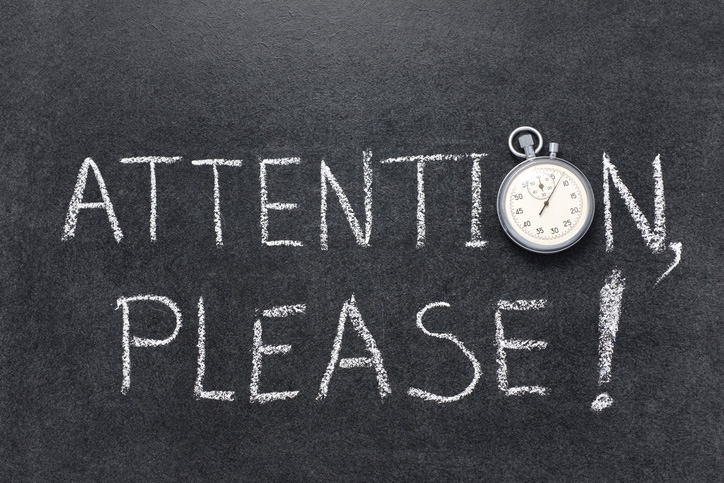When I lived at my parent’s place, I was always amazed by how much time my father spend on the daily news. Once during breakfast, usually in the form of a newspaper. A second time during lunch, and a third time by watching the evening news. He must have spent upwards an hour or so every day consuming news. Why did he do that?
In this post I will dig into attention mechanisms. Specifically: where they come from, how they work and what you can do to better cope with them. To get a better grip on this, we will first dive into some history.
History
In 1833 the leading news paper of New York was the New York Enquirer, costing about six cents. Not very expensive by today’s standards, but for that time it was considered a luxury item. An amount not many ordinary people had to spare. Hence, it is no surprise that someone saw a business opportunity in this [1].
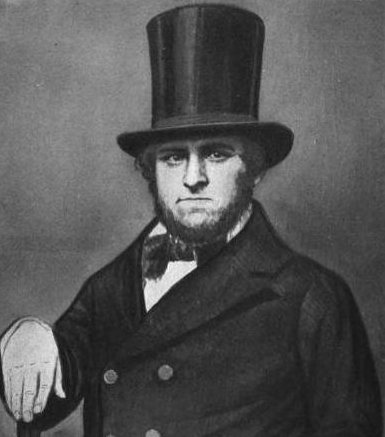
That someone was Benjamin Day. In that same year he launched a new newspaper: the New York Sun. By late 1834 his new paper had become the leading one in the city, amassing five thousand daily readers. Why? A copy of the New York Sun cost only one cent, vastly more affordable for the average person back then. His rivals were amazed, how could he produce a newspaper that cheaply, below the price of the cost of printing? One word: advertisement. Day was not in the business of selling a newspaper to his readers, he was in the business of selling the attention of his readers to his advertisers. He did this by mixing news, often news of the sensational kind that easily catches attention, with advertisements.
Advertising of course is nothing new. Though, back then it was mostly just text, reminiscent of personal ads. That quickly changed throughout the years. During the forties and fifties, large billboards became increasingly common. Though our homes were still a sanctuary devoid of much of that visual onslaught, this quickly changed as televisions became commonplace. Advertisements sneaked inside our living room, and that was not the end of it. The last two decades have seen ads move even physically closer: into our very hands, in the form of one of the most effective advertisement delivery devices invented: smartphones.
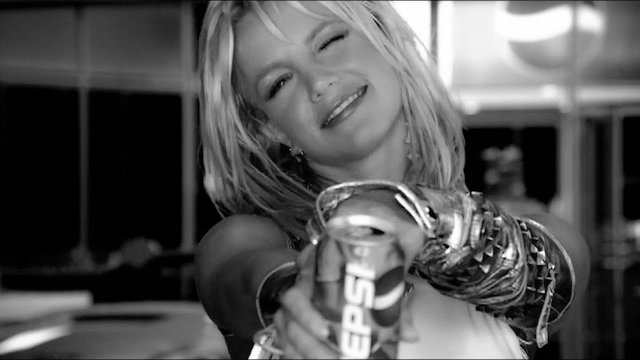
Nevertheless, let’s be honest: no one really wants to see those ads. People do not voluntarily choose to watch advertisements. So, how do we get them to do this anyway?
Mechanism
To understand the mechanism behind this, we go back in history once again. This time to the early nineteen-sixties. Meet B. F. Skinner working, at the time, at Harvard University. Skinner had ambitions to become a writer, but became disillusioned with the craft, and instead ended up becoming an influential figure in behavioural psychology. During the sixties he conducted experiments with animals, and one such experiment focused on pigeons.
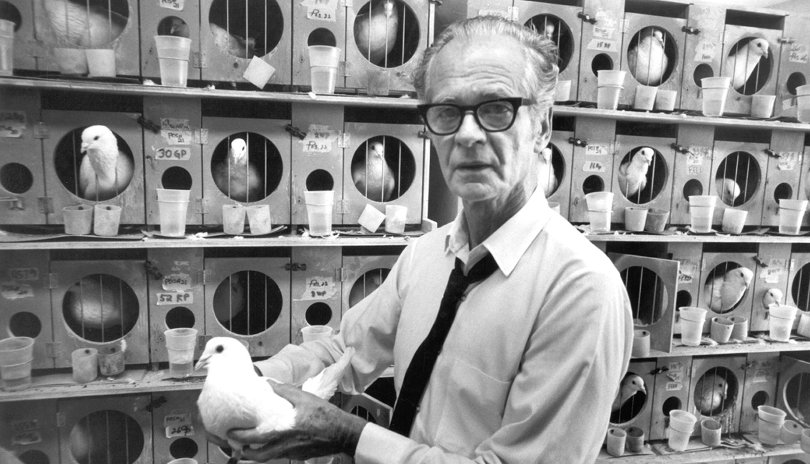
In this particular experiment Skinner placed a pigeon in a box. This box contained a small circular disc that could be pecked. In the first condition pecking this disc would release a little food pellet for the pigeon to eat. In the second condition it would sometimes release a food pellet, and sometimes it would not: an unpredictable pattern. What condition do you think made the pigeon learn the behaviour of pecking the disc the fastest? That’s right, it was the second condition, the one where whether or not the behaviour would be rewarded with a food pallet was unpredictable.
Do those results on pigeons translate to humans? What’s the closest analogue we have? That would be gambling. Remember those rows of old ladies sitting at one armed bandits in casino’s? The reason they keep sitting there, gambling away their money, is the exact same reason those pigeons kept hitting that circular disc: a variable reward. Sometimes you get something, sometimes you lose something, and you don’t know which one is coming next.

Immunity?
Now you may be thinking: I don’t gamble, I never go to the casino, so: no risk for me. Well, you may not go to the casino, but there is a game you play every day. I am referring to the game of scrolling through news feeds, responding to notifications on your telephone, and checking if you have any new e-mails. All of these share the same characteristic: sometimes there’s something interesting for you, sometimes there’s not, and you don’t know which one is coming next.
I think it is this variable award that got my father addicted to watching the news so often: even if most of it is not interesting, or something seen or read before on the same day: that’s not the point. If every so often there is something new in there, that’s what kept him coming back for more.
Ads in the mix
Now, think back to the advertisements. Like a news reel, or newspaper, a news feed is the prime example of something that gives you a variable reward. It keeps you scrolling so you can get a small dopamine reward for finding those interesting things. If you would put some advertisements in that news feed, regardless of whether they are interesting or relevant, people would be exposed to them. Giving you the perfect ‘voluntary’ ad delivery mechanism.
A rule of advertising is that the more times people see your ad the better the memorization effect is. That’s the reason why the same commercial is repeated on broadcast television in the same block. It does not matter what you think of the ad, it matters that you start recognizing it and that it starts to feel familiar.
The combination of advertising with other content of mixed relevance to the reader is what drives many modern social media platforms: Facebook, Instagram, LinkedIn, anything with a feed. I hope you see that this is essentially no different from the mechanism Benjamin Day used with the New York Sun to outwit his competition. If you are not paying for it, you can be sure that it is your attention that is being sold to advertisers.
Hooked
Diving deeper: how would you design a product that exploits this variable reward vulnerability that people have, both in news feeds and beyond? There is a recipe for this that has proven it works time and time again called the hook model. It consists of four steps: trigger, action, reward and investment. Let’s go through these steps by using an example.
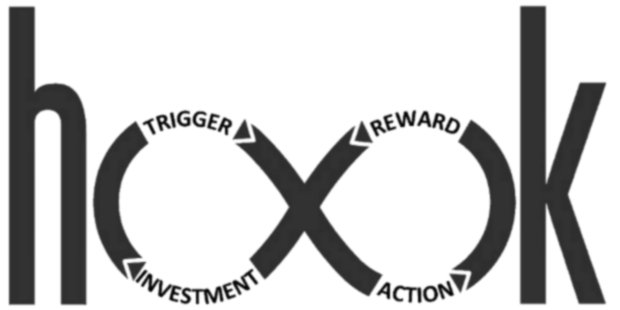
A trigger may be notification sound made by your telephone, a message that then pops-up telling you that you have a new message from someone, and that possibly even shows a part of that message to draw you in further. This is your first little hit of dopamine, similar to what you get when you scroll through a feed.
The action is your response. You open the message, read it and start typing something back. You re-read what you typed, think if it is an appropriate response, and then finally hit the send button.
Now comes the reward. You get a message back, or if you have posted something on a social network, you may get likes or comments on your post. That feels good: getting approval from others also gives you little shots of dopamine.
All of this feels so good, that it is now time for the last step: you invest. You post something new: a picture, a video or a message to get more of that dopamine. Your content is now in the app that you are using, regardless of whether it is Facebook, Instagram or WhatsApp. All use the same basic mechanism, some in more elaborate ways than others.
Since you are now invested, you are more likely to respond to the next trigger, and you go through the loop again, ad infinitum, reinforcing your behaviour. Feels creepy perhaps, but sounds familiar?
Effect
Now, you may ask: okay, but is it all that bad? Because: I get a lot of value out of the news and social media. Well, that depends on how you look at it. This graph from the economist shows that the more time people spend on their social media apps, the less happy they are about it.
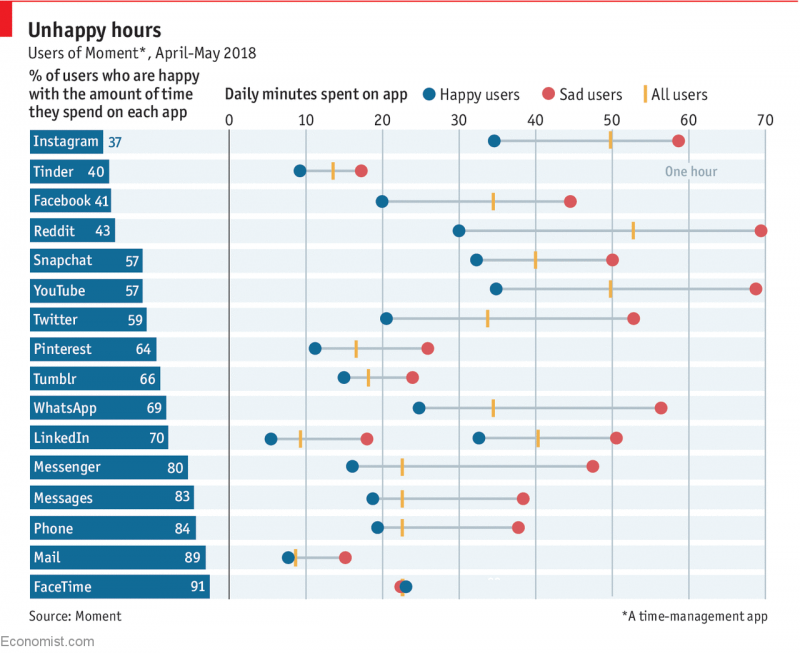
The findings are based on a time tracking app called Moment. This is admittedly not the easiest to interpret chart, but there are some clear patterns to spot. Most social media score quite poorly in terms of how happy people are with the amount of time they spent on these platforms, for example a full two thirds of Instagram users is unhappy with the amount of time they spent there. Furthermore, we see the more general trend that more time spent translates to less happiness for nearly all apps.
Graphs like this always raise the valid question: what is the direction of causality? Perhaps unhappy people are simply drawn to these platforms and stay there for a longer amount of time, or is it the other way around: does staying on these platforms make people less happy? There seems to be at least some evidence towards this latter conclusion [5].
What can you do?
Going back in time, what would I recommend my father to do in terms of breaking his news watching habit? Well, the first step is awareness. Nowadays, that awareness applies not only to television and news served on the remains of dead trees, but particularly to the kind that comes to you via screens, be it laptops, tablets or smartphones. You have already taken the first step by reading this post, so you are at least aware of the what and the how: good.
In a broader sense: there is genuine concern nowadays for people having short(er) attention spans, and showing addictive behaviours to their social media feeds, all based on this exploitable mass vulnerability to variable rewards [7]. Fortunately, there are also some concrete things that you can do. I’ll leave you with three tips.
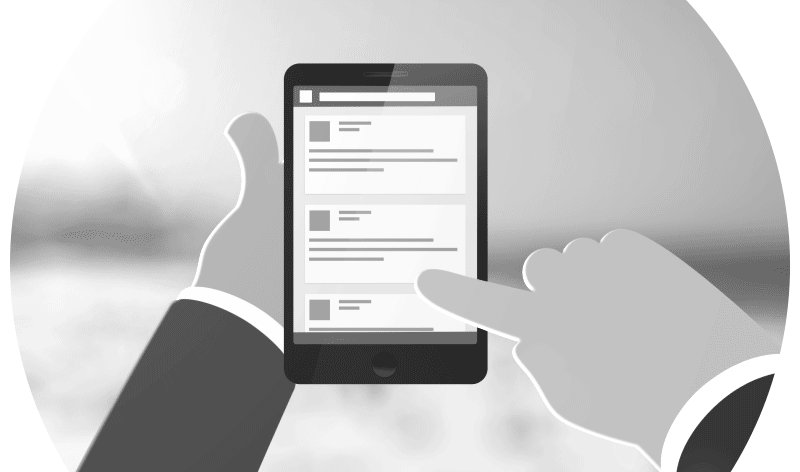
Three tips
Firstly, limit your time scrolling through feeds. Recognize when you are doing it, realize you are reinforcing the behaviour and ask yourself the question: what am I accomplishing by doing this? People far too often grab their phone or tablet, because they don’t dare allow themselves to get bored. Do the opposite: embrace boredom.
Secondly, turn off as many notifications as you can. Particularly all notifications not generated by another human being, by which I mean: either an algorithm, or those not specifically directed to you, like app groups that you are part of.
Thirdly, I realize that it may not be easy, but it really does not hurt to put away your smartphone or tablet for a while and do something else. The best way to cure yourself and others of these reinforced behaviours is simply to stop responding, and have something better to do.
In closing, remember: your life is what you pay attention to, so make sure you pay attention to the right things, those things that really matter to you.
Sources
- Wu, T. (2016). The Attention Merchants.
- Eyal, N. (2013). Hooked.
- Holiday, R. (2014). If you watch the news …
- Cain, D. (2016). Five things you notice when you quit the news.
- Economist (2018). How heavy use of social media is linked to mental illness.
- Tigelaar, A. S. (2016). Breaking free: how to rewire your brain.
- Center for Humane Technology (2018). App Ratings.

